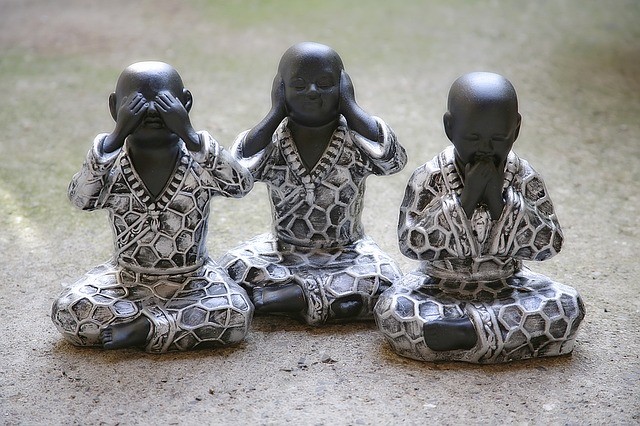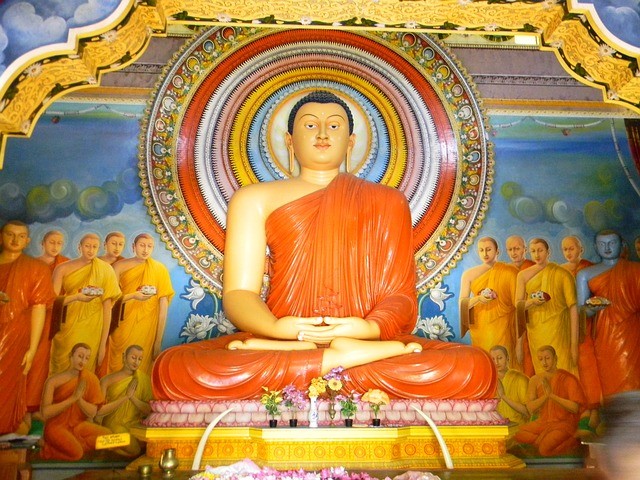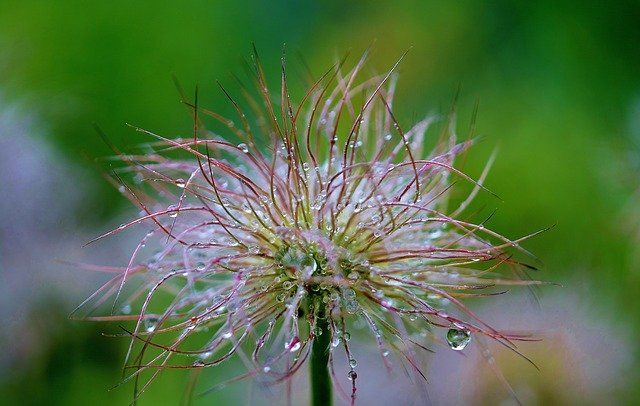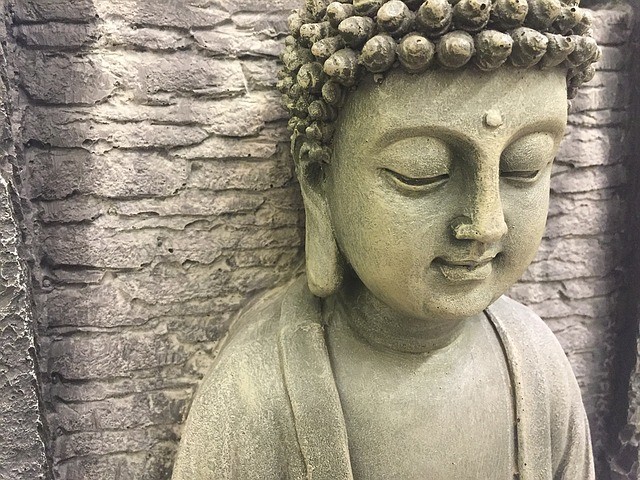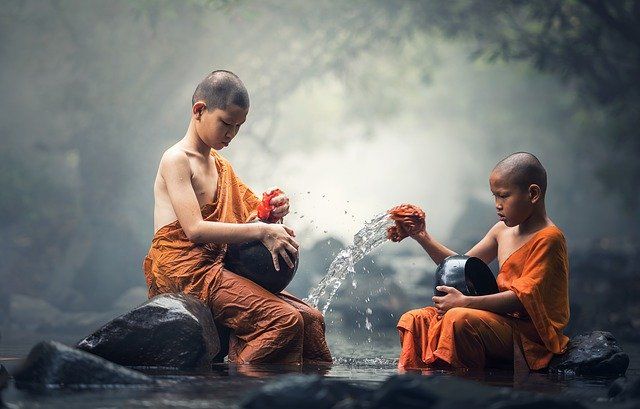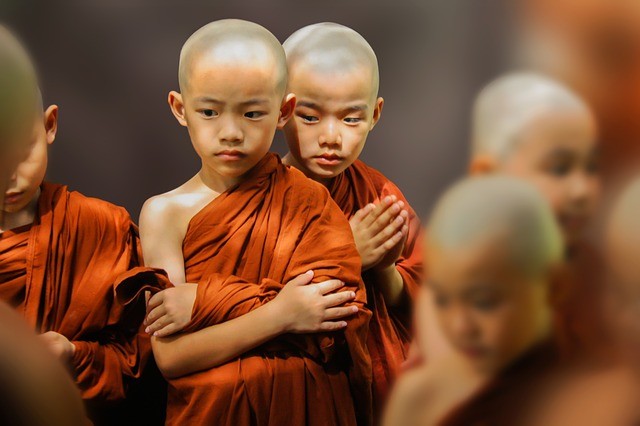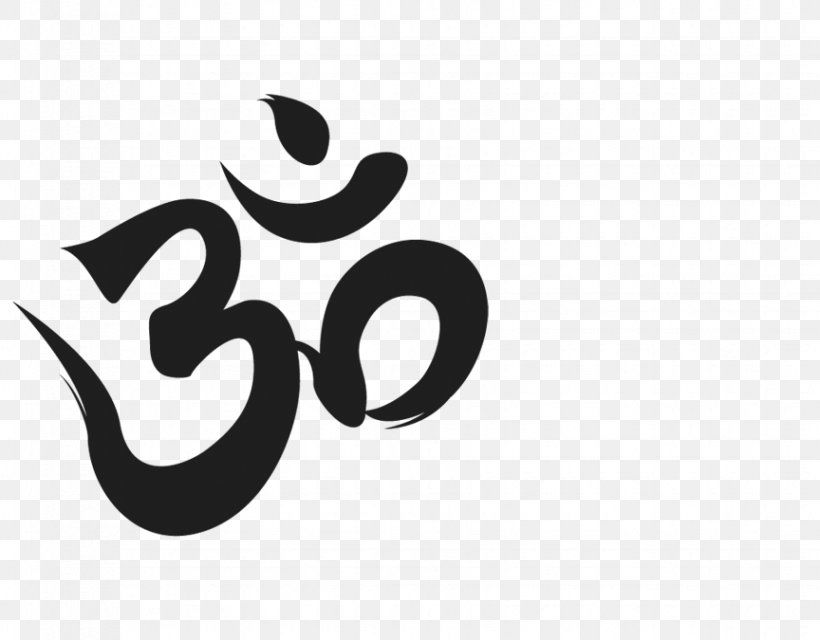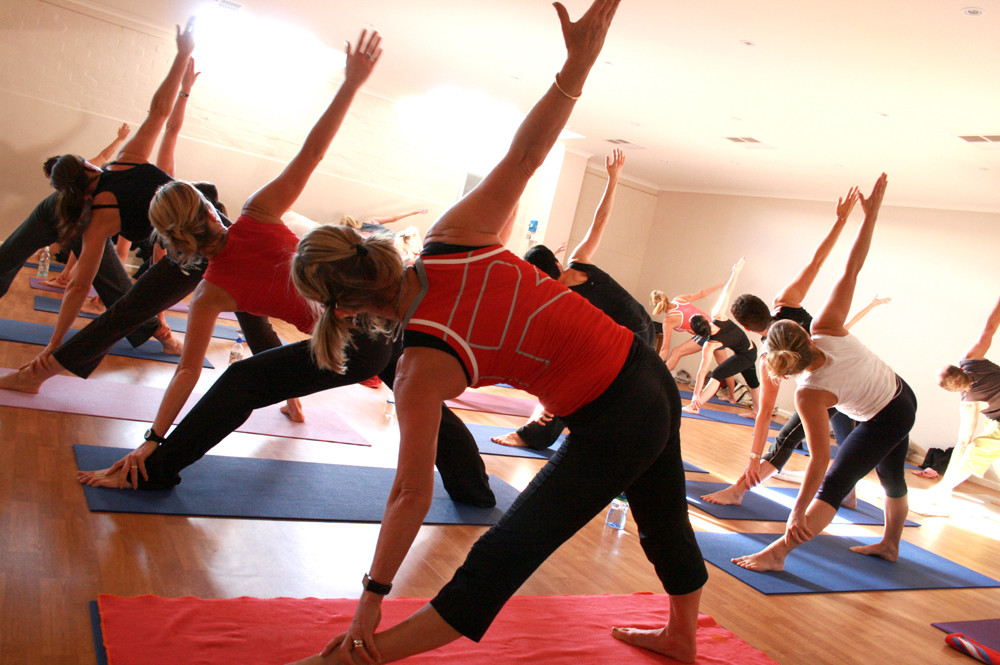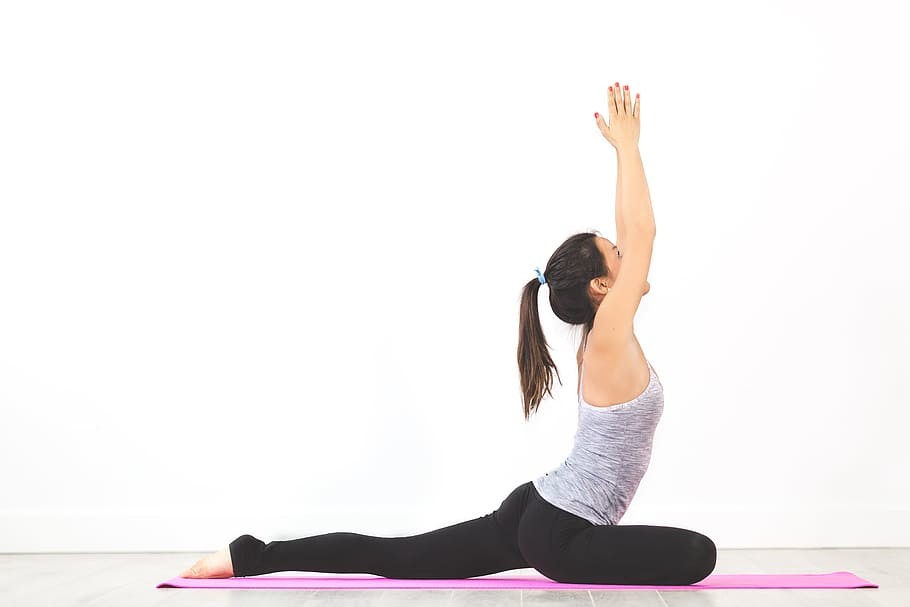
by Tirtha Acharya | Jan 22, 2020 | Blogs
Patanjali has given the most beautiful technique of yoga in his famous book Yoga Sutra. He arranged yoga in a scientific manner making easy to understand and practice. He explained human psychology and managed yoga accordance of the psychological state of people. Brittis are the main cause of the fluctuation of our mind so we have to remove all our Brittis to attain salvation. He separated Chitta Brittis in different five types. Explaining yoga Patanjali stated that “Yogaschittabriti Nirodha.” Yoga is removing of fluctuation of the mind. The five Brittis are as follows:
- Pramana (Correct knowledge)
- Viparyaya (Incorrect knowledge)
- Vikalpa (Imagination or fantasy)
- Nidra (Sleep)
- Smrti (Memory)
The states of our mind can lead us to the destination of different points of their nature. The real knowledge can overcome the fluctuation of our mind. Yoga can maintain the peace of our mind. Five Brittis of our mind can teach how our mind works. If we understand the trick of our mind, we can understand what is real and what is not. To get rid of all the Brittis, we have to practice yoga in our life. Explanation of five Brittis of Chitta:
1.Pramana (Correct knowledge):The word Pramana means the evidence in Sanskrit language, so the real meaning of Pramana is the knowledge which is based on the evidence. Pramana is the knowledge of the reason and logic. Pramana is the knowledge which is based on the direct experience. There are two kinds of knowledge in the world, first one is direct and second is inference which is based on the imagination.
According to Patanjali, the knowledge doesn’t have to be perceived by the five senses but we have to see the practical application in our life of the knowledge. The valid knowledge is the best. We don’t have to believe the knowledge which is said by others. We have to experience the knowledge by ourselves. We have to perceive the real knowledge. We have to distinguish the real and unreal knowledge.
In total, we can say that the real knowledge is the knowledge of our experience. Any of the knowledge is neither real nor unreal but the knowledge becomes real if the knowledge can help us in our practical life.

2. Viparyaya (Incorrect knowledge): sometimes we think that something is correct but if we go into the deep study, we realize that the knowledge is not correct. The incorrect knowledge, which seems to be correct, is called Viparyaya. We imagine something by our limited knowledge to be the real appearance when our illusion disappears, we can understand the reality of the things.
The knowledge which is gained by our five senses is unreal but seems to be very real. Most of the person of the world think real which can be sensed by our five senses but in reality, the knowledge by five senses is not real. When we practice yoga and get enlightened, we know the supreme reality. The supreme reality cannot be affected by the situation.
We may think to swim in the river is very easy but in reality, we can’t swim in the real. Sometimes, we can think the task is very easy from the surface but the reality becomes too hard because we can’t perform the activities in real. So, we have to recognize the reality of the world in the path of spiritual journey. We have to see everything as they are.

3. Vikalpa (Imagination or fantasy):Vikalpa is imagination which we create in our mind by ourselves. This is the truth that we think something is real by our fantasy. Our life becomes whatever we think about our life. If we think life is hard, life will be really hard in the reality. Our subconscious mind doesn’t analyze either something is real or not but it follows what our conscious mind guides it. If we think ourselves as a successful person in our life, we become successful because there into limitation to be successful in our life. If we think we are happy in our life, we become happy in our life. There is not an absolute reality for our subconscious life but in spirituality, our journey begins to the search for the ultimate reality.
In this world nothing is real but all the realities are as our mind creates they are. Our search should go to the search for real knowledge of the universe.

4. Nidra (Sleep):Nidra is the deep sleep which is the state of our mind in which all the thoughts and ideas absent. If we can sleep soundly, we can be refreshed after we wake up from our sleep. In our sleep, we forget our knowledge, everything about ourselves. If unnecessary thoughts disturb us, we can’t sleep well. If we can’t sleep well, we can’t awake in the fresh mood. We cannot be healthy and happy. We have to rest properly and wake up with new inspiration in our life. We don’t indulge in the daydreaming. We have to be aware all the time to walk in the path of enlightenment.
The disturbed mind can’t awake during the day and can’t sleep soundly at the night. We have to overcome all the fluctuations of our mind to be in the path of the higher goal of our life, i.e. yoga. Stress disturbs us in the path of purification.

5. Smrti (Memory):Memory is the way which leads us to the past. By memory, we can be lost in the past days of our life. We can be happy by remembering the happy moments of the past or we can be unhappy by remembering our sad past events. By the vehicle of the memory, we start to live in our past rather than at the present. We think that we should do that and shouldn’t do that in the past. We become trapped in the past and can’t go ahead in our life. Past can’t be corrected so we have to forgive our past and start our journey to the higher achievement. Past can make us crippled and stop us from our purpose of our life.
In reality, we have to be the audience of all types of Brittis of our mind. We don’t have to be attached with any of those Brittis because they can’t lead us to the higher level of spiritual growth. We have to make still our mind by practicing yoga on a regular basis in our life.
The purpose of yoga is to make people aware of their way of life wherever and whoever they are. To make them able to differentiate between what is real and what is fake knowledge. Patanjali focuses on the factor that we don’t have to hang up on unnecessary activities thinking that they are real.

by Tirtha Acharya | Jan 19, 2020 | Spirituality
Buddhism is a concept of the religion founded by Gautam Buddha. It is not only a religious belief but also a spiritual practice and spiritual tradition. 7 percent of the people of the world are Buddhist. Buddha was born in Lumbini, Nepal, 563 BC. He got enlightened and started to spread the message of peace to the most of the Asian countries so he is called as the ambassador of peace of Asia.

The main philosophy of Buddhism can be categorized into three parts. They are four noble truths, eightfold paths, and Pancasila. The Buddhist philosophy is written in three Tripitakas. Three Tripitakas are:
- Binaya Pitak: This is the scripture of Buddhism which includes the rules for the monks and nuns.
- Shukti Pitak: This part of Tripitaka has the sermons of the Buddha.
- Abhidhamma Pitak: This is the book of the collection of the philosophies of Buddhism.
Here are the four noble truths of Buddha:
- There is suffering in life
- There is the reason for suffering
- There is the way to be free from the suffering
- The way of being free from suffering is eightfold paths
- There is suffering in life: Suffering is the part of our life which is inseparable for everyone who is born in this world. We are born here with the suffering. We have to be in suffering in our life until and unless we don’t get enlightened. Buddha focused on the fact that life can’t be imagined without suffering. Suffering is as true as our life is. It is said that who is enlightened, he or she should not be born in this world. If we have some Karmic debt, we have to born here in this world.
- There is the reason behind suffering: Buddha’s teaching always clarifies the reason for everything and the solution of every reason. The main cause of the suffering is the desire. How much we get in our life, we want more and more. The chain of gaining will not over. There are unlimited desires in human mind. The human can’t be satisfied with the worldly affairs, world’s achievement. There are limited resources to fulfill our desires but we have unlimited desires so the available resources can’t fulfill our desires. The nature of desire is like a pot where we can’t put anything because it doesn’t have the lower part so from where everything can fall.
- There is the way to be free from the suffering: There is the way to be free from the suffering. Buddha’s teaching is very scientific because he raised the hypothesis that there is suffering in this world and at the end, he gave the exact solution of the hypothesis. Now, we have the hope that we can be free from all the sufferings of the world. It is in our hand to be free from all the sufferings. If we want, we can be free from all the pains and discomforts.
- The way of the freedom of the suffering is eightfold path: If we practice the eightfold path, we can be free and get the liberation from the suffering of the world. They are the real solutions to our life’s suffering. They are the Real Techniques to be totally free from the desires of our life.

Eightfold Path:
Right View: View means the attitude. We have to see anything that that thing is real. In a simple way, we see what we want to see. We don’t have to judge anything by our perspective. We think that death is the end of our life, which is the main cause of the fear in our life. Fear creates suffering. We have to know everything in their real existence.
Right Resolution: This is the second step of the eightfold path. In this step, we take the right resolution of our mental development. We take firm determination to love all the being of the world. We focus on being polite to others and to be sincere when we behave with others.
Right Speech: We have to speak the truth all the time. Speaking truth can lead us to the higher level in the path of liberation. If there is something harmful matter to others, we don’t have to speak. We don’t have to speak the false because false is not the way of liberation. False is not the part of the higher source.
Right Action: We don’t have to perform the action that is not right. We have to analyze whether it is right or not before we do anything. We don’t have to harm to others by our action. We don’t have to suffer others by our action.
Right Livelihood: We have to live with the minimal things that we need to live. We don’t have to collect more than we need. We don’t have to do the profession, which is the harm to others.
Right effort: We have to try to change our habits or we have to try to be better and better. We have to be able to change our overall factors of life from negative to positive. We have to be bold to be better.
Right Mindfulness: We have to try to be aware every moment. We don’t have to lose the awareness because the awareness can lead us to the higher source. We have to be guided by the real knowledge rather than the false knowledge. We have to develop our mind to accept the higher source of knowledge.
Right concentration or Meditation: We have to practice the meditation of four types. To unite our self to the higher source, we have to practice the meditation. In this state, we are free from the ego. We are able to understand the natural state of our life. The flow of life can be seen in this state.
Pancasila:
- Not killing
- Not stealing
- To be away from sensual (including sexual) misconduct
- Not lying
- Not to be in the state of intoxication

Five moral virtues are the very important part of the eightfold path. These five virtues are the common people. There are eight or ten virtues for the monks and nuns.
Different branches of Buddhism are as follows:
Mahayana: It believes that the scripture should be changed by the time. It focuses that we all have the possibility to be enlightened in our life.
Theravada: Theravada Buddhism is the branch of traditional Buddhism. It is the oldest form of Buddhism. It believes that the original Buddhism is the pure Buddhism. It focuses on the learning the teachings of Buddha and doing the meditation. It is a very powerful concept that we have to search the wisdom.
Vajrayana: Vajrayana is thebranch of Buddhism which believes in Tantra. Tibetan Buddhism is in this category. We have to start our spiritual practice with a much matured Guru.

by Tirtha Acharya | Jan 18, 2020 | Blogs
Ashta Siddhi
Siddhi (सिद्धि) is a Sanskrit word which means perfection or accomplishment. All the religions have a belief in supernatural powers. They have described different types of powers in their own words. Hindu philosophy has explained 8 major siddhis called Ashta Siddhi (Anima, Mahima, Garima, Laghima, Prapti, Prakamya, Isitva, and Vasitva) and 10 minor siddhis.
Anima- one on Ashta Siddhi
The power to minimize the size of the body, even to the size of the atoms, is termed as Anima Siddhi. It is the availability to become smaller than the smallest. For example, Hanuman had subtilized his body in the time to search Sita in Lanka.
Mahima
Mahima is one among Ashta Siddhi. It is the ability to increase the size of the body as desired. It is also described as “the power to become larger than the largest”. Lord Krishna had increased his body size in the course of Bhagawat Geeta in the 11th chapter. Similarly, he had maximized his body in Vaman Avatar to measure the three worlds in three steps. Hanuman had taken a huge form to burn Lanka, and to fight with Kumbakarna.
Garima
The capacity to become infinitely heavy in weight at will is said to be Garima Siddhi among ashta siddhi. It is also said as becoming heavier than the heaviest. Hanuman had made his tail heavy so that Bhima, who was having the energy like that of ten thousand elephants, could not lift it up.
Laghima – 4th Ashta Siddhi
It is the accomplishment to become almost weightless (becoming lighter than the lightest). Levitation and flying are examples of this power.
Prapti
Prapti is the ability to attain anything desired.
Prakamya
Next type of siddhi in ashta siddhi is Prakamya. It is the ability to realize whatever one desires. Such as travel/go anywhere at will in a moment, even faster than a second, the power of entering the body of another (parakaya pravesh), ability to reform and adapt as per circumstances, the power of keeping oneself youth for any length of time.
Isitva
It is the absolute lordship over the entire creation or nature. The natural phenomenon obeys to such person having Isitva power.
Vasitva
It means the ability to have control over other. Through this accomplishment, one can control senses, mind (of self and others) and matters (including elements). Through this siddhi, one can tame wild animals and enthralled people etc.
Patanjali has mentioned the ways to attain the supernatural powers as well. “Janma aushadi mantra tapah samadhijah siddhayah” which means attainment of supernatural power is by birth, medicine (drugs/herbs), mantra (incantation), penance (self-discipline), and samdhi.
Attainment of siddhi by Birth: Sometimes it happens that children born from spiritually advanced parents acquire some of the divine powers due to good karma (action) of their previous life. It is also said that they might have attained those powers in their past life as well which continued in this vary life.
Medicine: In nature, there are some special herbs, use of which can help to attain some miraculous powers. For example, Sanjivini herb could bring Laxman back to life.
Mantra: Incantation of powerful syllables or words with proper discipline helps to acquire an accomplishment. Mantra works in two ways: 1) due to the effects of the power of sound, 2) due to self-discipline that mantra brings.
Penance: Self-mastery or self-discipline makes the mind clear and purer which provides the great strength. This helps to control all five elements just by will. However, one should have an unperverted mind. The practice of Ashtanga yoga as taught by Patanjali helps to acquire this stage.
Samadhi: Through regular practice of meditation and other spiritual practices, one reaches to the stage of Samadhi i.e. oneness with consciousness or uninterrupted consciousness. After this stage, he starts acquiring different types of siddhi.
Minor Siddhis
- Kamarupam (कामरूपम्): The ability to change the body in the desired form
- Durashravanam (दुरश्रवण):The ability to hear the voice of any distance location.
- Duradarshan (दुरदर्शन):The ability to see the things of any distance as will.
- Manojavah (मनोजव:):Ability to travel at the speed of thought.
- Svachchhanda Mrityuhu(स्वच्छन्द मृत्यु:): The power to leave the physical world (to die) only on desire. One can choose the time of death.
- Devanam Saha Krida Anudarshanam (देवानां सह क्रिडा अनुदर्शनम्): Ability to witness and participate in the activities of demigods.
- Aagya Apratihata Gatih (आज्ञा अप्रतिहता गति:): Giving orders that are completely obeyed.
- Yathasankalpasansiddhi (यथासंकल्पसंसिद्धि): The power to fulfill whatever is thought.
- Parakayapraveshanam (परकायाप्रवेशनम्):The ability to enter in the body of others and feel the sense through their organs.
- Tri-Kala Darshanam (त्रि-काल दर्शन):The vision or knowledge of past, present, and future.
- The caliber to know all the language including those of animal
- Knowledge of one’s and other’s past life.
- The cathexis to read other’s mind.
- The ability to make one’s body and matter invisible.
- The merit of making everyone happy and joyful
- The knowledge of all universe and planetary system.
- The knowledge of arrangement and movement of stars
- The ability to make body’s sound inaudible
- The capacity to be motionless.
- The to understand bodily anatomy
- The aptitude of finding hidden and secret things.
- The eligibility to behold the celestial beings
- The knowledge of soul and consciousness.
- The power to surround oneself with the blaze of fire
- The potency to walk on thorns, water, fire etc.
- The ability to tolerate extreme hot and cold.
- The power to be effectless from the elements: not burn by fire, not drown in water, not harmed by poison etc.
Note: Lord Buddha, Lord Krishna and other all the enlightened person have stated that it is wiser to go to the path of enlightenment than to seek for supernatural powers because these powers hinder on the path of enlightenment. These powers can never give real peace, harmony, and happiness.
The final goal of human beings is enlightenment. Whenever the practitioner gets diverted towards power, he will miss the true path. So, it is suggested that not to be motivated by those siddhis. However, due to true spiritual practices, one acquires it. In other words, these powers are by product to the path of enlightenment.
If one misuses it then he will ruin. One should not generate ego on the achievement of power and should not do whatever he likes. If he ignores those powers or uses them in a positive way then it will not block the path to enlightenment.
Hope you enjoy our article about Ashta Siddhi. If you like to read more health related blogs click here

by Tirtha Acharya | Jan 1, 2020 | Yoga
1} Food
To walk on the road of becoming a perfect yogi, it is necessary to check what you consume and what impact it creates on your body. There are numerous ways to learn about this subject but the best way to do it is through visiting a Yoga retreat in Nepal. A Yogic diet is a balanced diet that ancient Yogis believed had a huge influence not only over our physical well being, but also over our thoughts, and ultimately our emotional and spiritual well being.
This balanced diet provides an individual with a newfound sense of serenity, and a profound command over the mental and spiritual abilities. If you take a certified Yoga teacher training in Nepal, then you can get to know about it in a much deeper perspective. At Nepal Yoga Teacher Training, the food served is fresh, organic, and contains the vital elements to make your body healthy. Yogis follow a vegetarian diet and it will be a new experience for your taste buds as well. There are a variety of cuisines which will amaze and excite you. The food in Nepal Yoga Home is served with the utmost care and consideration. This care is reflected in the plating style and in the quality of the food prepared.
2 } Accommodation and the environment
During your yoga training in Nepal, you will be spending at least a month or two in Nepal. You do not need to worry about accommodation as we have got you covered. During your stay, we provide you 3-star accommodation that is equipped with all the basic needs. Our room is spacious and each room has a twin bed with attached washroom (western style) 24 hrs. There is a facility of hot and cold showers throughout the day. Each room has a window and there, you can see a net covering the window. This is done to prevent insects from entering your room. This Yoga center in Nepal holds cleanliness to the highest regard. Each room faces a garden and you can enjoy the tranquility of nature. Enjoy the tranquility and serenity as well.
3} Staff and services
“Atithi Devo Bhava” Means the guest is equivalent to god. Throughout Nepal, guests are given utmost respect and consideration. Guests are given the same importance as God and are taken care of properly. At Nepal Home Academy, we follow this motto and our team is dedicated to serving you in the best way to provide you a homely experience. We pride ourselves in being the only Yoga institute in Nepal that gives such care and consideration to guests. Furthermore, we provide Ayurvedic treatments like massages.
4} Surroundings and approach
Nepal Teacher Training In Nepal resides in the delightful Kathmandu valley. To be clear, it resides on the outskirts of the Kathmandu valley. It mingles with the beautiful countryside and gives you a picturesque display of green hills . The Kathmandu valley houses numerous UNESCO World Heritage Sites which are worth a visit. These include Pashupatinath, Swayambhunath, and Boudhanath. If you fancy short hikes and adventure, then there are plenty of hiking retreats too. The weather in Kathmandu is pleasant throughout the year. The Nepal Home Academy sits about 15 minutes away from the Kathmandu valley and you can explore it if you want.
5 } Traditional and Authentic teaching technique
We truly believe in delivering the true essence of yoga which was previously neglected due to modernization. People mostly know about the physical aspects of Yoga but it is more than that, it is a lifestyle or a way to connect to the higher self. With the real theme of yoga in mind, we at Nepal Yoga Teacher Training have developed the authentic and traditional teaching techniques to impart the wisdom of Yoga. We have various yoga teacher training courses that are designed to help you to become a yoga teacher. The classes are based on Classical Hatha Yoga which is the very foundation of every style of yoga. Our class prioritizes on the Yogic philosophy and provides learners a deeper understanding of the roots of Yoga.
6} Lead trainer and his team
Our lead trainer is a Ph.D. holder in Sanskrit Philosophy. He/She has more than 20 years of experience in teaching yoga and a very strong command over numerous Sanskrit scriptures and Yoga philosophy. He/She can deliver difficult concepts in a simplified pattern and make people understand the very norm of Yoga. His/Her team has designed yoga classes for all sorts of practitioners.
7} Schedule for the Teachers Training Student
This Yoga school in Nepal focuses on the overall growth and development of students. Students of every level can learn with the utmost ease here. The course is designed to last 4 weeks. In the first week, the major focus is on understanding the body types and capacity of the students. An emphasis is also placed on the experience of the student and his attitude towards the subject matter. This is done so that the teacher can deliver the best to the students and boost their learning abilities.
The second week focuses on the overall development of the root concept of yoga by teaching various yoga philosophies. Students are taught about the anatomy of yoga as well. This week is crucial for learning yoga as it focuses on the value of human lives and how through yoga, one can lead it more wonderful. The third week focuses on skill development where we learn about the different skills to be practiced to become a good yoga teacher. In the last week, students show their skills on whatever they have learned in the course. This helps students to showcase their skills and knowledge.
8} Asana Sessions
We mostly focus on the Classical Hatha yoga. We design classes according to the level of the students in the class to accommodate everyone and to gain maximum benefits out of the session. We create classes which are anatomically fit for them and giving the therapeutic benefits as well as a modification when needed. Every asan session ends with meditation or the short relaxation to make sure that they connect themselves with the body and heal on their own. Our classes contain traditional and authentic essence behind yoga which connects everyone to their inner self and helps them to realize the cause of Life.

by Tirtha Acharya | Dec 25, 2019 | Yoga
Yoga for Student Life for High Physical & Mental Growth
Yoga is not the limited subject matter. It can cover all the aspects of our life. Yoga is beneficial not only for the youths and adults but also for the students and seniors. Students are the valuable gifts of the future that they can handle the future the world. So, they need to be healthy and happy in their life from their school life or childhood. For the students, yoga can be the best medium to be free from the stress and increase the mind power.
Most of the students in this modern era are very confused by the present scenario of the world. They should be free from the stress that comes from the outside source. They are so vulnerable that they can learn what they see by their eyes in this world. In this situation, yoga can be the best way to make them clear about their goal.
The concept of yogic life should teach from our childhood because we can perceive everything effectively in our childhood. If we can learn something about yoga and positive thinking in our student life, our life can become easier in our childhood as well as in the future. There are a lot of benefits of doing yoga in the student life. The most important factor in the student life is memory power and yoga can increase and improve our memory power.
Why yoga in student life?
The children don’t have any life’s problems like adults but they need to do yoga for their academic improvement, stress management and healthy body and mind. All the students from class 1 to graduate need to do yoga in their life for their study as well as physical, mental and psychological development. Some of the students are under the stress of their family condition and other psychological problem. If they do yoga, they can be free from the stress from outside in the classroom and they can concentrate on their study.
Concentration plays a very important role in the study. If we cannot give any attention in the study, we never understand anything. Yoga can improve the power of concentration of the student. Concentration can improve the level of student’s academic position and overall extra activities. Children can distract very easily from their study so yoga is very useful to bring their attention to the study. Many types of research show that yoga can improve the concentration and memory power of the students.
The healthy body can receive everything easily in the classroom so yoga can be helpful to improve the health of the body of students. If students become healthy, they can give their full attention in their study. The fresh mind of student can focus on the study. Yoga should be playful to the students. Yoga can make a student, better student in the class. Yoga increases the positivity in the life of students. Yoga increases the level of confidence of the student so he or she can perform the better in the classroom or in the examination.
There are a lot of pressures in the life of students. They think exam and result are their hard times because they want to bring high grade to show in the family and among their friends. To cope with that pressure, all the students should start yoga and all the schools should give the environment for them to learn yoga. Yoga can teach them to take their exam and result easily.
If the student is very good in the study, what is the reason to be in pressure? They are never in the pressure. They start to enjoy their exam and result after their yoga session. Yoga helps students to make more friends in their life. Students can be friendlier by the yoga. Students become more sociable in the society. Yoga can increase the power of decision making. Yoga can enable the students to make the commitment to their goal setting. So, Yoga for Student Life is very worthful.
The problem of the today’s students is to copy their homework from their own previous homework or friend’s homework. This kind of habit is not good. In this situation, yoga can help them to be creative in doing their homework. They don’t have to worry about their homework. They can do their homework in a creative way.
Most of the students are restless in their childhood so they need to be calm for improving their study. Yoga for Student Life can be helpful for their peace of mind. When their mind becomes calm, they can give their attention in their study. Relaxation is a most important factor in the life of a student. Yoga increases the good hormones in the mind of students and those good hormones can be very effective them to be relaxed. This kind of chemical can play the role of motivation in the life of a student.
There are much-restricted thinking in the society. The traditional way of thinking can lead the student to the narrow-minded. Yoga can help the student to develop the broader mind. Yoga inspires the students to be open-minded. Yoga can also help them to be positive in their life. Positivity leads them to the higher level of thinking capacity. Their conduct and behavior become very praiseworthy. They can take the problems of their life very easily. They can find out the reason behind the problem and the solution of the problem.
Students are emotionally weak in their age. Students are easily affected by the outside situation. Yoga can help them to be emotionally strong. Students become able to control their emotions and anger after the regular practice of yoga. Yoga is beneficial to increase the immune system of the body of students which can prevent physical and mental diseases.
Most of the students take wrong decisions in their life and they regret after the result of their decision. But, yoga increases the decision making power and that can lead them towards the maturity of the mind. The most important factor is that yoga prevents the students to be away from the addiction because yoga can relax their body and lessen the stress of their mind. So, they never think about any addiction in their student life.
Some of the yoga for the student life ( yoga poses) are here:
- Cat-cow pose
- Staff Pose
- Child Pose
- Pigeon Pose
- Cobra Pose
- Tree Pose
- Chair Pose
- Lotus Pose
- Seated Twist Tose
- Garland Pose
Yoga for student life is essential to improve student’s study and health. There are a lot of benefits of yoga in student life. Students can develop a new broaden concept of their life by yoga which will be very helpful in their future. Students are the source of our future world so we have to give them the chance to do yoga from their student life.
